13 Renaissance and Reform
Spread of Renaissance culture across Europe: 16th-17th c
“The Reformation”
Our goals: identify big issues, big changes
- “First wave” led by Protestants
- Centers: HRE, Swiss towns; ends with Peace of Augsburg, 1556
- Goal: reform of “THE CHURCH”
Main groups as they developed despite these goals:
- Catholics
- Lutherans: followers of Martin Luther
- Calvinists: followers of John Calvin
- Other city-reform groups (Protestants)
- Radical reformers: ex. Mennonites
Martin Luther (1483-1546)
“traditional” N. European intellectual: theologian
personal theological crisis (about sin and forgiveness)
distaste for Rome and central church
actual fight: an abusive funding/indulgence campaign
regional political leaders: duke of Saxony
What political gains for supporting Luther?
taxation, monastic lands, leadership
war in HRE (League of Schmalkald)
Peace signed at Augsburg, 1556: cuius regio, eius religio
Main areas: HRE (parts), Scandinavia
anti-papal pamphlets:
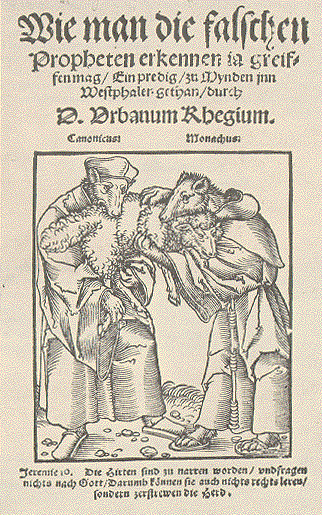
Rhegius, Wie man die falschen Propheten erkennen mag. 1539
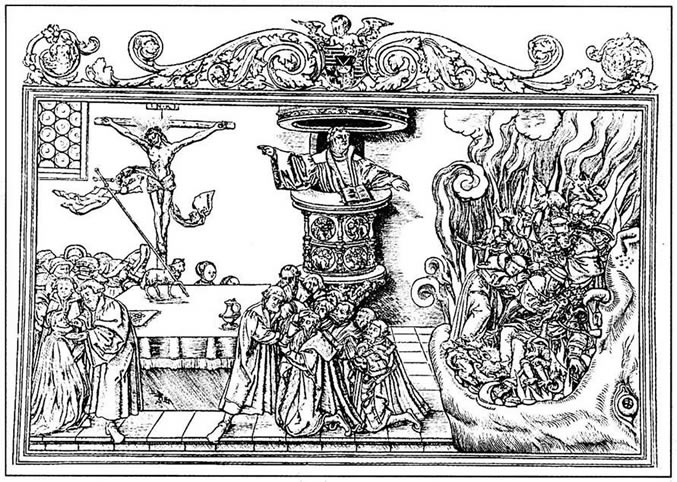
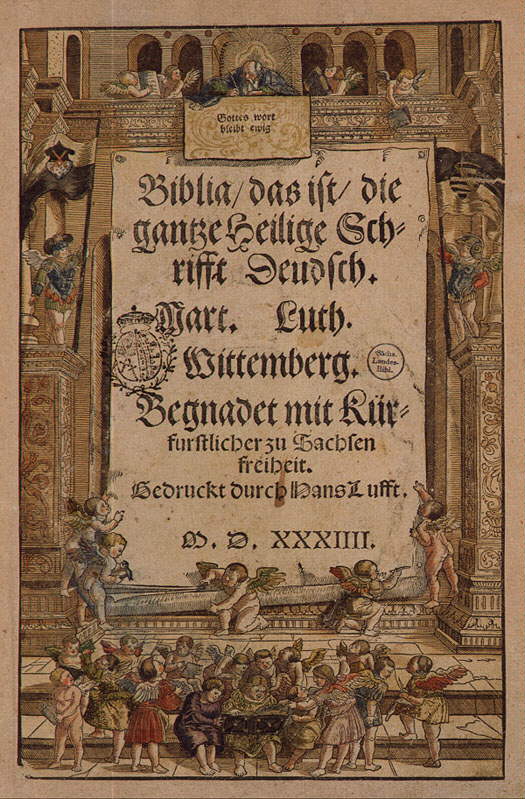
Luther Bible, 1534
John Calvin (1509-64) and Calvinists
Paris: law, theology; to Geneva
1st ed. Institutes of Christian Religion pub. 1536; 1559
Main areas: Swiss cities; Rhineland to Netherlands; France; England; Scotland; parts of Hungary
Catholics
early reform efforts: slowed by Italian wars
Sack of Rome, 1527
Council called 1542 Trent, met 1545-62 sporadically
first sessions doctrine
later: control over standards, reform of abuses
progress against Protestants
Political advantages to Catholicism: papal treaties; legitimacy
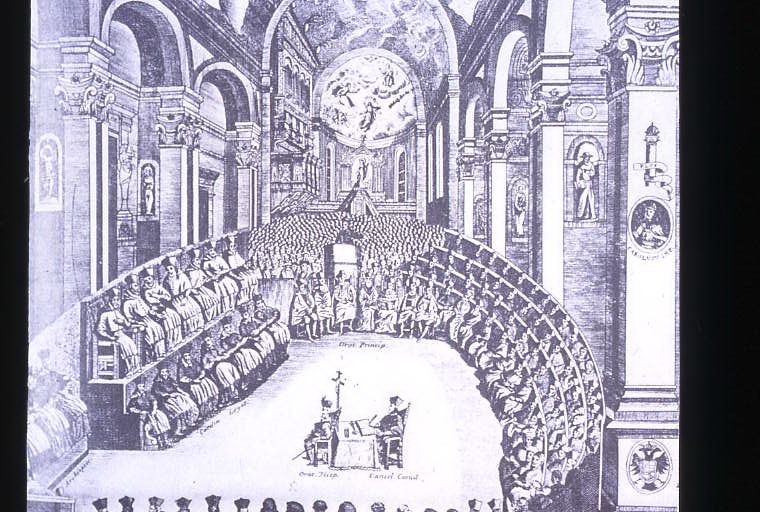
Religious wars: France through 1590s
succession disputes, some parties and claimants Calvinist
Religious Wars II: Thirty Years War (1618-48)
End of religion-based warfare on continent in this era
England
regional control over Church, headed by King
Immedate cause: divorce
doctrine: both Lutheran, Calvinist influences
Mary and return to Catholicism; Elizabeth restored Protestantism
Religious stability: 1688
Renaissance culture amid religious reform
Intellectual life
Protestants: role of Bible: Sola scriptura
- Bibles in vernacular. Programs of translation, biblical scholarship
- Literacy programs to max. the number of readers of Bible
Catholics:
- new theology schools, also lay education
- Trent: “Jerome” vulgate; limits to biblical scholarship
General:
- increased interest in political thought
- efforts at regional uniformity of religious thought
- control of spread of publications
- education

Jan Steen, Village School, 1610
Notions of toleration emerge gradually, mainly 17th c+
art and architecture
- Lutherans: little effect on visual arts
- Calvinists: iconoclasm
- Catholics: visuals as aid to worship: rise of baroque
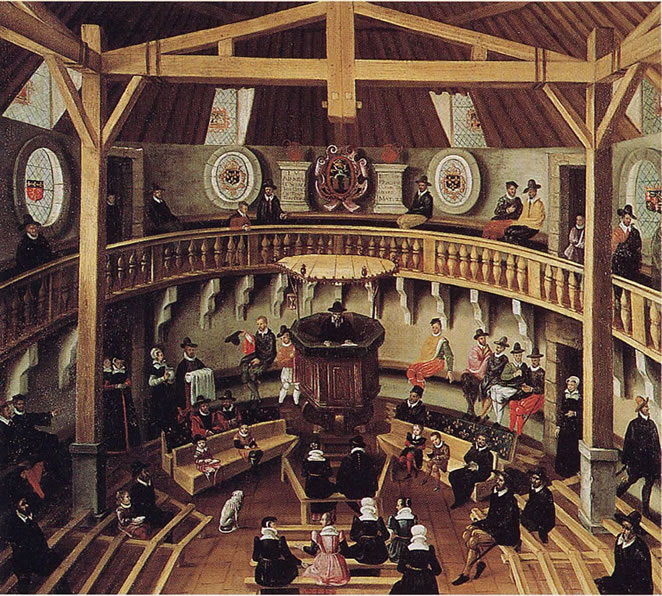
Lyon Calvinist Church

Emmanuel De Witte: Interior of a Protestant Gothic Church, 1668. Museum Boymans-van Beuningen, Rotterdam
